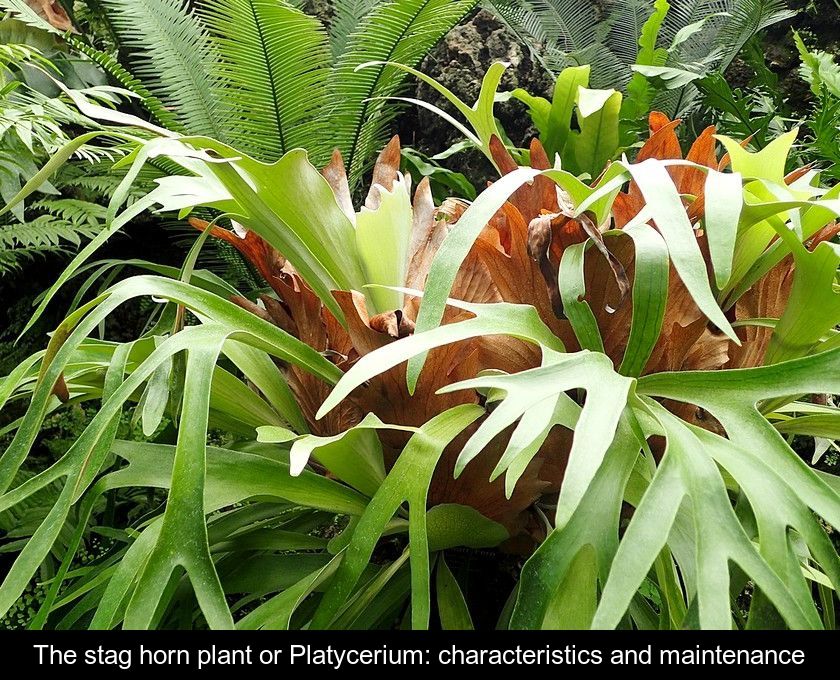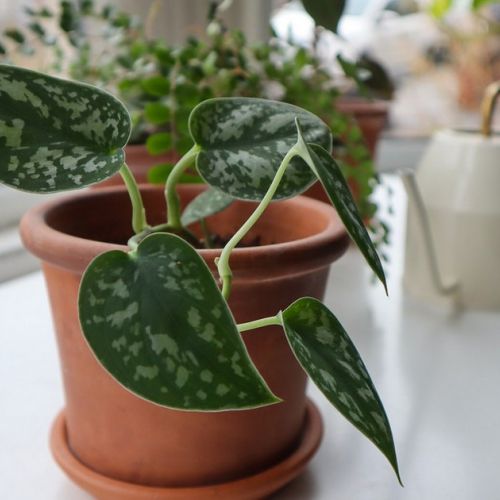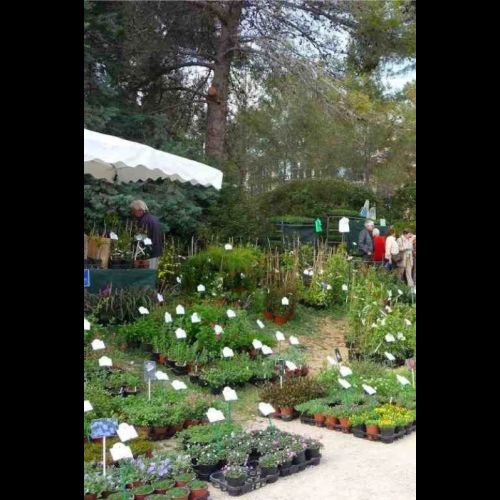The Stag Horn Plant Or Platycerium: Characteristics And Maintenance
If you're looking for a surprising houseplant for a hanging, consider Platycerium! This curious fern is known by the vernacular names stag horn or elk horn because of the shape of its fronds. We explain its characteristics and needs.
How to recognize it?
The Stag horn plant or Platycerium is an epiphytic fern that is easily recognized by the shape of its fronds.
Its evergreen fronds are flat, narrow and cut like antlers, hence its nickname of deer horn plant or elk horn...
The Platycerium bifurcatum species is the one most commonly used as a houseplant, especially to create hanging baskets.
It is in fact a plant that in nature lives hanging on the trunk of trees in tropical forests. It is found in Africa, Australia and Southeast Asia.
In its natural environment, its hanging and cut fronds can reach up to 2.50 m long! With its pendulous habit and exceptionally large and shaped fronds, this plant is truly spectacular in suspension.
Warning: this plant should not be confused with stag horn plantain or Plantago coronopus which is an edible plant.
Where to install it at home?
To provide it with conditions close to those of its natural environment, the stag horn plant should be installed hanging in a room with a warm and humid atmosphere.
This amazing epiphyte plant will do well in a hanging basket in your bathroom, for example, as long as the light is dimmed and there is a minimum temperature of 13°C in winter.
You can also install it in suspension in other rooms of the house, as long as you provide it with sufficient hygrometry by fogging with non-calcareous water.
How to maintain the stag horn plant?
Platycerium bifurcatum is a fairly easy care plant. Pruning is limited to removing dried out fronds.
You should also check occasionally for caterpillars or grubs attacking the deerhorn plant.
To know how often to water it, simply observe its foliage. As soon as its fronds soften and droop, soak the plant for 15 to 20 minutes in a basin of water.
During the growing season in summer, add liquid fertilizer to the watering once a month.
Also, as soon as the temperature rises above 21°C, consider misting the fronds regularly with non-calcareous water.
In winter, be sure to reduce watering and keep the plant away from heat sources like radiators.
What are the tips to know?
To keep your stag horn plant healthy, you should avoid allowing water to stand on its fronds or at the bottom of its pot.
You should also not remove the bloom that covers its fronds. Therefore, you should not dust this plant by rubbing it with a cloth.
One trick you should know to clean it is to use a cold hair dryer. The jet of air will dust its fluffy fronds without damaging them.
How to propagate and plant the stag horn plant?
The easiest way to propagate the stag horn plant is to separate the shoots from the mother plant in the spring.
Use a sharp knife or grafting tool and gently separate the shoots, avoiding injury to the mother plant.
You can then install the recovered seedlings in an openwork basket or hang them from a board or piece of bark that you attach to the wall.
To help the seedlings adhere to their support, Place moss or sphagnum moss over the root ball by holding it with cotton thread and keep this substrate moist. The same tips apply to repotting the plant.






